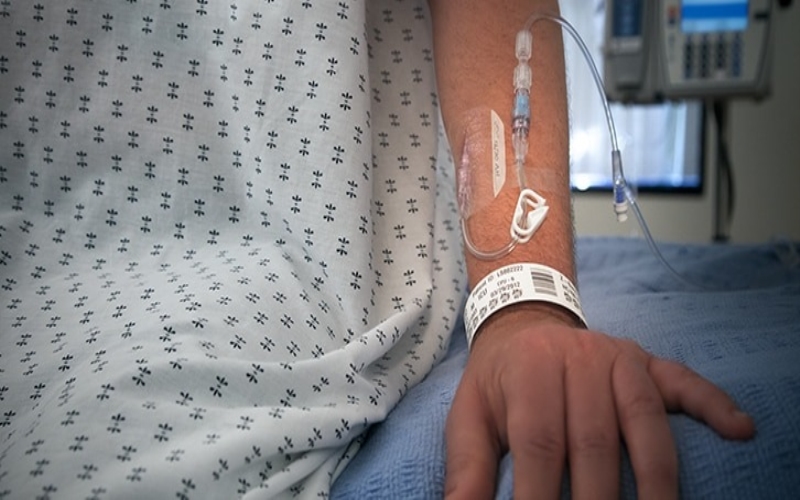A catheter related bloodstream infection, also known as CRBSI, is a serious medical condition caused due to contamination of the catheter used for prolonged periods. Indwelling intravascular catheters are commonly used in hospital settings for administering intravenous medications, fluids, total parenteral nutrition, blood products and frequent blood sampling. However, prolonged use of these catheters increase the risk of infections.
This article discusses about the Catheter Related Blood Stream Infection Market outlook.
Causes of Catheter Related Bloodstream Infections
CRBSIs occur when bacteria or other microorganisms enter the blood stream through the intravenous catheter. Some of the common causes of catheter contamination include:
Poor Hand Hygiene: Poor hand hygiene practices of healthcare workers while accessing or dressing the catheter increases the risk of contamination from bacteria on hands.
Break in Sterile Technique: Breach in sterile barrier precautions while inserting or dressing the catheter can introduce skin microflora into the catheter hub and lumen.
Skin Flora at Insertion Site: Patient’s own skin bacteria colonizing at the catheter insertion site can migrate along the external or internal surfaces of the catheter into the bloodstream.
Biofilm Formation: With prolonged use, biofilms containing clusters of microorganisms form on the internal and external surfaces of catheters. These biofilms provide a protected environment for microbes to survive and enter the bloodstream.
Contaminated Solutions: Infusate fluid or blood products contaminated during preparation or administration through contaminated connectors, ports or fluid pathways can introduce infections.
Risk Factors for Catheter Related Blood stream Infections
Following are some of the key risk factors that increase susceptibility to CRBSIs:
Extended Catheter Dwell Time: Long term catheters in place for over 5-7 days have higher infection risks compared to short term catheters.
requent Access of Catheter: Each access, whether for infusion, blood withdrawal or dressing change increases contamination chances.
Patient Factors: Critically ill patients, those with impaired immunity, renal failure, malnutrition or comorbidities have reduced defenses against infections.
Type of Catheter: Non-tunneled catheters carry more risk than tunneled catheters which have lower external surface areas exposed.
Insertion/Care Technique: Improper insertion, care or handling of catheters increases exposure to microbes.
Hospital Factors: Overcrowding and inadequate nurse to patient ratios in hospitals are linked to higher infection rates.
Symptoms of Catheter Related Blood stream Infections
Some common symptoms of CRBSIs include:
– Fever without any other apparent source
– Chills or sweating
– Changes in mental status like confusion in elderly patients
– Hypotension or circulatory shock
– Local signs of infection at insertion site like redness, tenderness or discharge
– Swelling or pain along the path of the catheter
In severe cases, signs of sepsis may be seen with multiple organ dysfunction. However, some CRBSIs can be asymptomatic as well. A high index of suspicion is needed especially in at-risk patients to diagnose and treat early.
Diagnosis and Treatment
Diagnosis of CRBSIs involves collecting blood cultures from the catheter and a peripheral vein for testing. A positive blood culture from the catheter paired with a negative culture from a peripheral vein confirms the diagnosis. Imaging tests like chest X-rays may show signs of complications.
Once confirmed, the treatment involves removing the contaminated catheter as the first step. Antibiotic therapy guided by culture sensitivity reports is then started intravenously for 2-4 weeks depending on the severity and nature of infection. In critically ill patients, antibiotics may be continued through a new catheter or alternate venous access. Short term low dose antibiotic lock solutions can also clear biofilms in some cases.
Prevention of Catheter Related Bloodstream Infections
A multidimensional approach is recommended to prevent CRBSIs which include:
– Adhering to maximal sterile barrier precautions and sterile technique during insertion and care
– Using chlorhexidine for skin antisepsis prior to insertion
– Opting for the shortest possible dwell time and removing catheters not essential
– Ensuring proper training and competency of healthcare staff in insertion and handling
– Maintaining catheter and insertion sites aseptically clean and dry
– Using antiseptic or antimicrobial impregnated catheters where appropriate
– Following guidelines for catheter site dressing changes and access
– Performing surveillance and giving feedback to healthcare teams on infection rates
Regular education, monitoring and performance feedback have shown to considerably reduce CRBSI rates in many healthcare facilities. A zero-tolerance approach warrants a collaborative effort by doctors, nurses and hospital management.
Market Outlook
The global market for prevention and treatment of CRBSIs has been witnessing steady growth over the past few years. Factors such as rising cases of hospital acquired infections, growing demand for long term catheters, increasing incidence of chronic diseases and aging population are contributing to the growth of this catheter related blood stream infection market worldwide. North America currently dominates the market due to increasing awareness, good reimbursement policies and presence of key players in the region. Asia Pacific is projected to be the fastest growing market in the future led by increasing healthcare expenditure, improving healthcare infrastructure and rising medical tourism in developing countries like India and China. The development of novel treatment options and preventive measures are further expected to boost the growth of global catheter related bloodstream infection management market in the coming years.

